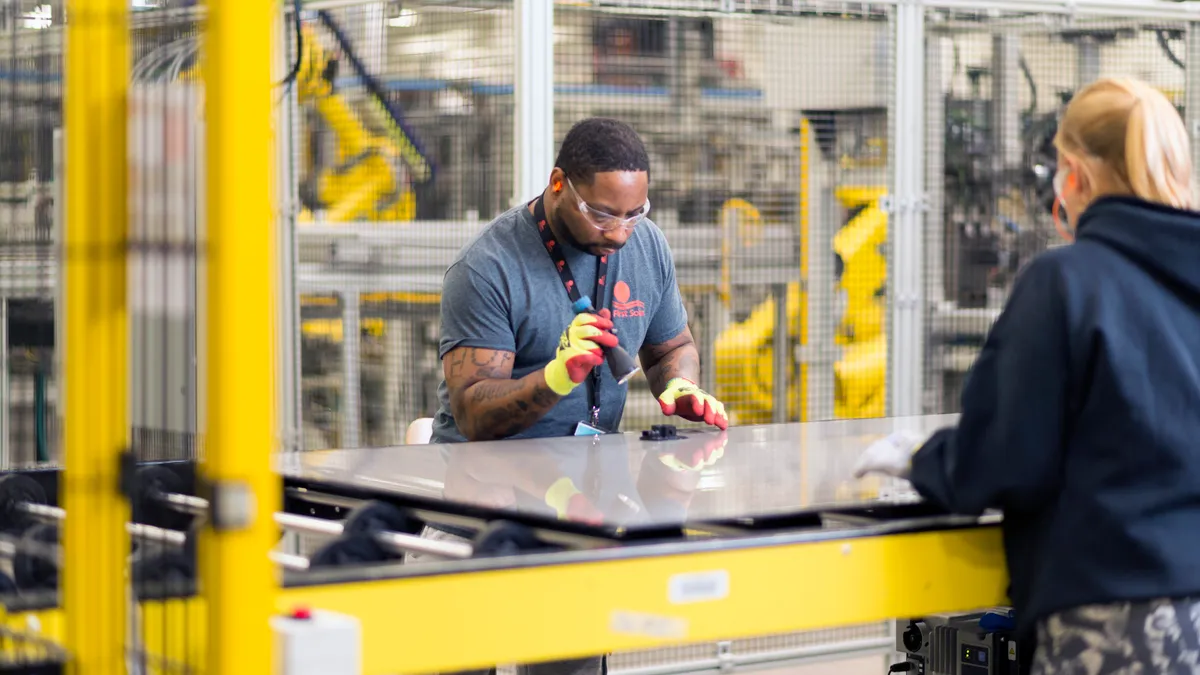Dive Brief:
- The Treasury Department and Department of Energy announced new guidance Wednesday for a 30% tax credit available under the Internal Revenue Code’s section 48C for the construction of facilities that focus on clean energy manufacturing and recycling, industrial decarbonization and critical minerals processing.
- The 48C credit and related credit 45X are “very substantial,” Moss Adams partner and certified public accountant Peter Henderson said in an interview, but “a lot of companies just aren’t aware” of the two incentives.
- While 48C is a competitive investment tax credit that can only be claimed once, with total payouts capped at $10 billion, the 45X manufacturing production tax credit is not capped and can be claimed per each unit — for instance, a $3 credit per kilogram of solar-grade polysilicon produced in the U.S.
Dive Insight:
Under 45X, a mid-sized solar module manufacturing facility operating at a “fairly modest” production level of two gigawatts per year could generate an annual tax credit of $140 million, Henderson said.
“A lot of companies just aren't specifically aware of these two incentives that, for manufacturing, are very substantial,” he said. “One of the things that is kind of unique is that these incentives are technically complex, both from an accounting perspective, but also from an engineering perspective.”
As a result, guidance is “absolutely needed here,” Henderson said. “Anything related to tax, there are always situations that arise where it's not clear.”
New guidance from the IRS clarifies and modifies the agency’s Notice 2023-18 that established the 48C tax credit, while DOE’s guidance advises companies on the submission of concept papers for facilities that might qualify for the credit. The department will open a 48C eXCHANGE portal for submissions no later than June 30, and submissions will be accepted through July 31.
Industry has been eager to see thorough guidance on the incentives included in the Inflation Reduction Act, which are a “gold mine of opportunity” and companies are “still digging” into the requirements for, Norton Rose Fulbright partner Keith Martin said during a February conference.
“One of the things about these incentives is that they really seem to be working for their intended purpose,” Henderson said. “There's been a ton of press releases of companies that did not have operations onshore previously, or were previously building their products offshore, that are now establishing manufacturing operations here in the U.S. just to get a piece of these.”
$4 billion of the $10 billion in 48C funding is “reserved for projects in communities with closed coal mines or retired coal-fired power plants,” Treasury said. The first round of applicants will receive $4 billion, with around $1.6 billion reserved for projects in those communities.
The 45X credit can’t be claimed for goods produced at a facility that received the 48C credit, requiring companies to choose between credits. For the most part, 45X is the “higher-dollar” credit, said Henderson.
“If eligible for both, the decision depends on the comparative significance of capital cost versus operating cost for the facility,” DOE wrote in guidance about the two credits.
The 45X credit is a new one established by the IRA, while 48C was established previously “but has long since been depleted” and now has a “totally different process” for qualifying, Henderson said.
As 48C requires potential recipients to submit a concept paper and application for the proposed project to DOE, and will only pay out from a finite pool of $10 billion, he said it’s “more of a DOE grant that is effectively monetized in the form of a tax credit.”
After companies submit their concept papers, they will receive a letter either “encouraging or discouraging” the submission of an application, the department’s guidance says. Regardless of DOE’s response, the decision of whether to apply is up to the company, and anyone who has submitted a concept paper will be eligible to submit an application.















